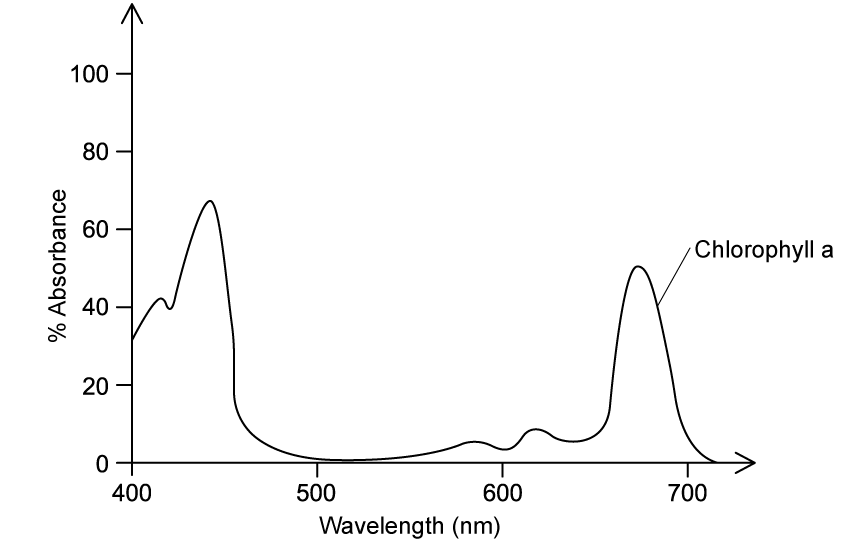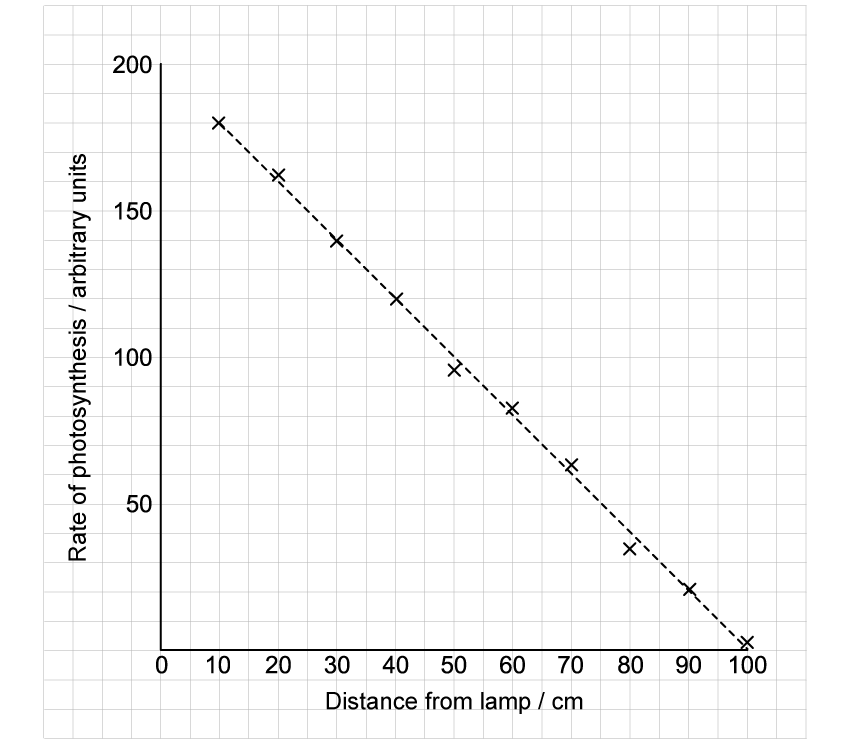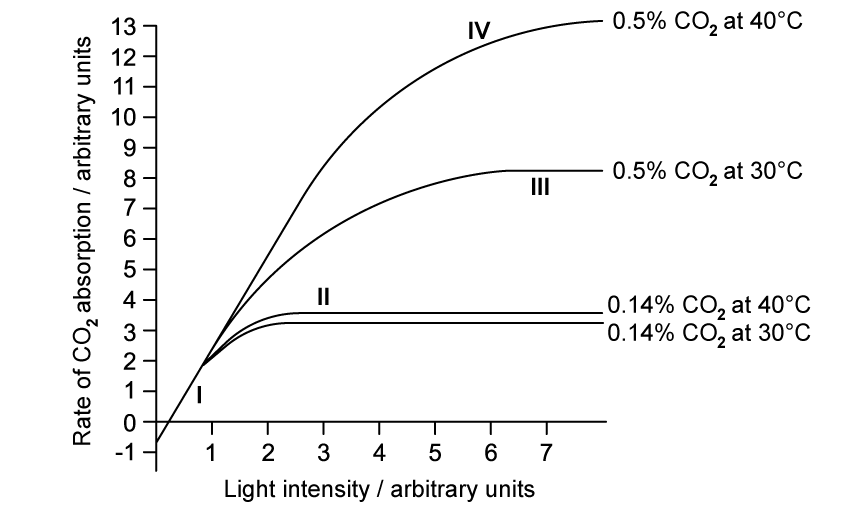The graph shows the absorption spectra for chlorophyll a.

Which of the following statements, relating to the absorption spectra for chlorophyll and the action spectrum of photosynthesis for green plants, are correct?
I. The absorption spectra of chlorophyll pigments are obtained by measuring their absorption of indigo, violet, blue, green, yellow, orange and red light, whereas the action spectrum of chlorophyll is the wavelengths of light that bring about photosynthesis.
II. The absorption spectra for chlorophyll and the action spectrum of photosynthesis are both plotted using % absorbance on the Y-axis.
III. The absorption spectra for chlorophyll and the action spectrum of photosynthesis both display two main peaks, including a larger peak in the red region (~450 nm) and a smaller peak in the blue region (~670 nm).
IV. The absorption spectrum of chlorophyll displays a trough in the green/yellow portion of the visible spectra (~550 nm), whereas the action spectrum of photosynthesis does not.


